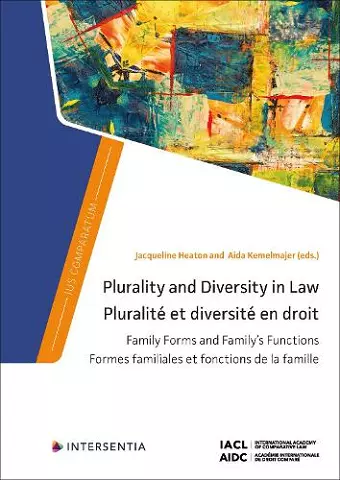Plurality and Diversity in Law
Family Forms and Family's Functions
Format:Hardback
Publisher:Intersentia Ltd
Published:28th Feb '23
Should be back in stock very soon

This non-fiction hardback, "Plurality and Diversity in Law" from Jacqueline Heaton, was published 28th February 2023 by Intersentia Ltd.
ISBN: 9781839703058
Dimensions: unknown
Weight: unknown
545 pages